Healing Miracles among Early Friends
Many Quakers are skeptical of the possibility that prayer, faith, and healing touch can contribute significantly to physical and mental healings. In recent decades, an increasing number of respected medical doctors, including Bernie Siegel, Larry Dossey, Joan Borysenko, Andrew Weil, Jeffrey Rediger, and Lissa Rankin, have promoted both the research and case studies that show that the body, mind, and spirit work together to create health. Prayer, faith, authenticity, and spiritual community have all been identified as potent elements of health and healing. Many miraculous healings happened among the first Quakers, and I hope Friends today will re-examine the history of healings in our tradition and invite the Spirit to work in us more fully to bring healing to ourselves and others.
Jesus was known for performing healing miracles, and when he sent his disciples out two by two to share the good news of the gospel, he commissioned them also to perform healings. Though their efforts were not always successful, the four gospels and the Acts of the Apostles recount numerous healing miracles attributed to apostles. Likewise, when Quakerism arose in seventeenth-century England, many early Friends testified that healings happened among them. They and others saw this as a sign that they were, indeed, a fresh manifestation of original Christianity.
William Dewsbury, like many of those who became the first Quakers, was a spiritual seeker from childhood. In York, he became connected to a group of fellow seekers that was one of the first communities to be convinced by the message of faith that had been brought to them by George Fox in 1651. Other members of this group joined Fox in taking the good news farther north, but Dewsbury wasn’t sure if he should join them. He had been disappointed by other zealous religious groups, and he asked himself, was God truly at work among these people? According to an account by Edward Smith, author of William Dewsbury c.1621–1688, Dewsbury prayed to God for clarity: “I cried mightily unto the Lord in secret, that He would signally manifest Himself at that time amongst us, and give witness to His power and presence with us.” Afterward Dewsbury witnessed some miraculous healings, and this provided him the assurance he had sought:
I can never forget the day of his great power and blessed appearance, when he first sent me to preach his everlasting Gospel. . . . And he confirmed the same by signs and wonders; and particularly by a lame woman who went on crutches. . . . Richard Farnsworth, in the name of the Lord, took her by the hand, and George Fox after, spoke to her in the power of God, and bid her stand up, and she did, and immediately walked straight, having no need of crutches any more.
This healing and others witnessed by Dewsbury were for him outward signs of God’s blessing on the Quaker message and ministry. They corresponded to the inner confirmation he had already received, and this provided a joy and courage that stayed with him even during subsequent long years of imprisonment.
William Dewsbury was not the only person to see the seal of God’s favor on the Quaker movement in the healings that happened. Elizabeth Hooton was one of the first to become a convinced Quaker, after George Fox joined in the religious gatherings she held in her home. This group soon called themselves “Children of the Light.” In a testimony he later wrote of Hooton, Fox said, “She had Meetings at her house where the Lord by his power wrought many Miracles to the Astonishing of the world and Confirming People of the Truth which she there Received about 1646.” One particular healing had the effect of convincing many skeptics. A woman who had suffered for 32 years from what seemed to be an evil spirit sought help from Fox. She was very disruptive in one Quaker gathering, and Fox felt inspired to hold a meeting at Hooton’s house. During the second meeting at the Hooton home with this woman, a transformation came over her; she became calm and sane. The Children of the Light kept her with them for two more weeks before sending her home, demonstrating that her cure was lasting. Many local skeptics were convinced.
Many miraculous healings happened among the first Quakers, and I hope Friends today will re-examine the history of healings in our tradition and invite the Spirit to work in us more fully to bring healing to ourselves and others.
Most of the healings and miracles associated with Quakers in the early years were connected with George Fox. When he spoke, he had an ability to bring listeners into contact with the Divine Power that was inspiring him. William Penn later wrote, in a testimonial published along with Fox’s Journal: “The most awful, living, reverent frame I ever felt or beheld, I must say, was his in prayer. And truly it was a testimony he knew and lived nearer to the Lord than other men; for they that know him most will see most reason to approach him with reverence.” The Divine Power working though Fox sometimes caused healings. Many of these happened after Fox spoke to an injured or ailing person, touched them, prayed for them, or did some combination of these three things.
In 1653, a man brought his wife to Fox in hopes that she might be cured. It had been a long time since she had been able to eat or speak, and she was not able to sit without assistance. The husband had tied her behind him on his horse, to keep her from falling off. After she was brought inside, Fox spoke some words to her, as moved by God. Before she left, she was able to eat and speak and to climb onto the horse without help. On another occasion in a house of Baptists, Fox and his traveling companion found a group of people gathered around a sickbed. They invited Fox to talk to the dying woman, if he could say something consoling about the world to come. In his Journal, Fox recounted: “I was moved of the Lord God to speak to her, and the Lord raised her up that she was well, to the astonishment of the town and country.” Afterward the husband and wife both became Friends and opened their home for Quaker gatherings attended by hundreds of people.
Another healing occurred in Hawkshead, also in 1653, while Fox was traveling with Margaret Fell Jr. and teenaged William Caton. The three of them came to spend the night with a local Friend, and found a dirty 11-year-old boy in an advanced state of illness, being rocked in a cradle. His parents had taken their only son to see doctors in the large towns nearby, but the doctors said nothing could be done for him. Fox asked the servant girl to wash the boy clean.
“[T]hen I was moved of the Lord God to lay my hands upon him and speak to him,” Fox wrote in his Journal. Soon afterward, the boy was playing in the streets. When Fox passed through the town three years later, the boy’s mother urged him to stay and hold a meeting. She said everyone in town was convinced that her son’s healing was a miracle.
A later healing in 1677 comes from the Journal of John Banks and is mentioned in George Fox’s “Book of Miracles”; it involved Banks, a farmer and teacher who developed a pain and then paralysis in one arm and hand, making him unable even to pull clothes on nor off himself. The arm withered and the pain increased. The local physicians were not able to help him. Then he dreamed of a cure, which he documented in his journal:
[A]s I was asleep upon my bed, in the night time, I saw in a vision, that I was with dear George Fox; and I thought I said to him, “George, my faith is such, that if thou seest it thy way to lay thy hand upon my shoulder, my arm and hand shall be whole throughout.”
When he woke from the dream, Banks had a persistent feeling that the vision had been true and that he should go see Fox. Finally, he felt it was a test of his faith to travel to Swarthmoor Hall to ask Fox for this help. Banks made the journey, and after a meeting for worship, he pulled Fox aside and the two men took a walk together. Banks showed Fox his paralyzed, withered arm, and described his dream or vision. Fox stopped walking, looked at his friend, and lay a hand on Banks’s shoulder. “The Lord strengthen thee both within and without,” Fox said.
There was no immediate change in the arm. That evening, however, as Banks ate dinner at Thomas Lower’s house, without thinking about what he was doing, he picked up his silverware with the arm that had been paralyzed, something he had not been able to do for many months, “which struck me into a great admiration, and my heart was broke into true tenderness before the Lord; and the next day I went home, with my hand and arm restored to its former use and strength, without any pain.” When he next encountered Fox, he told him that the arm had mended. “Well, give God the glory,” Fox responded.
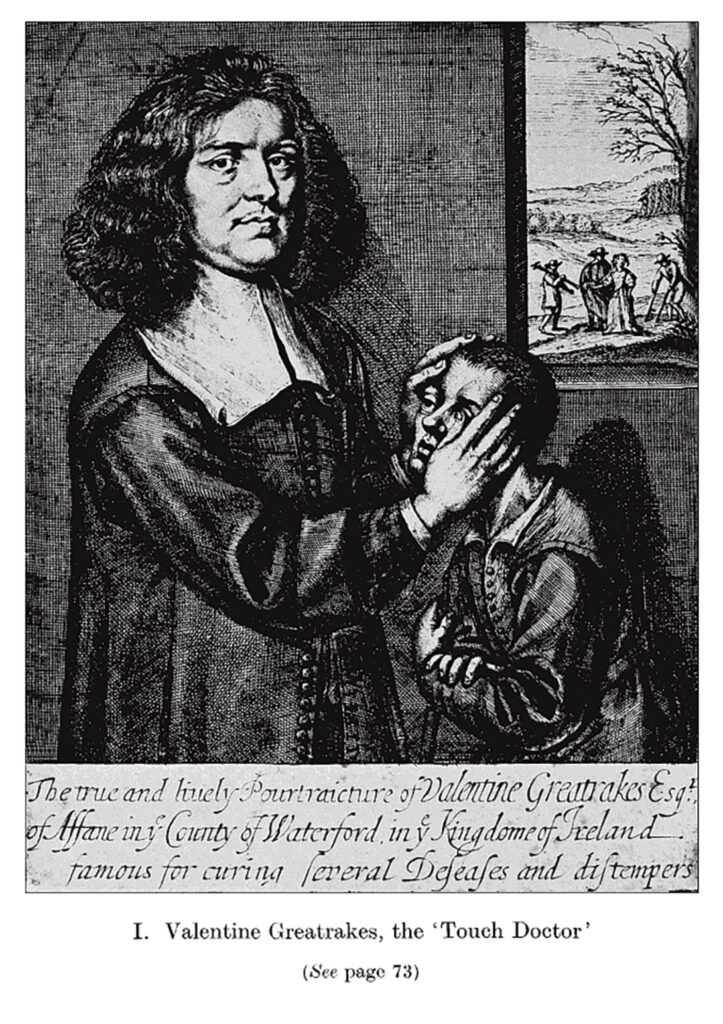
In his 1658 introduction to The Great Mystery, a book by George Fox, Edward Burrough gives an account of the beginning of Quakerism, writing that it was an extraordinary time: “[T]hings unutterable were known and made manifest; and the glory of the Father was revealed.” Burrough does not specify what these events included, because he says he would not be believed: “much more might be declared hereof, that which could not be believed if it were spoken, of the several and particular operations and manifestations of the everlasting spirit that was given us, and revealed in us.” In 1671, Fox extolled the charismatic healing powers of Quaker women: “I believe there is a thousand women that are beyond the wisdom of this world all: yea, and the power of God hath wrought miracles among them.” He may be referring to healings that happened in the women’s meetings, but he does not give specifics.
Reports of miracles also arose when Fox traveled in the North American colonies in 1672. One remarkable event, recorded in George Fox’s “Book of Miracles,” occurred that year in New Jersey. One of Fox’s traveling companions, John Jay, was thrown from a horse onto his head, breaking his neck. Witnesses, including Fox, thought Jay was dead. However, Fox knelt down beside him and lifted up Jay’s head by the hair. The neck turned loosely. Fox then put aside his riding stick and gloves, braced his feet against a tree, took Jay’s head, and with one hand under the chin and the other behind the head, lifted it with all his strength three times and then “brought it in.” Jay began to rattle, then breathe. The astonished witnesses carried Jay and set him beside a fire to get warm. Later they fed him and put him to bed. The next day John Jay was able to get back on a horse, and he rode 16 miles with his traveling companions to the next meeting.
Can Friends today learn to embody our faith in deeper ways, so that our presence, words, touch, and prayers can become increasingly powerful conduits for the divine healing that is always ready to manifest in this world?
Fox’s efforts to bring about physical healing were not always successful, nor was such healing always his intention when he prayed with or for someone who was ill. While staying with Margaret Fell Jr., who was now Margaret Rous after marrying Barbadian Friend John Rous in 1662, Fox sat with her sick child. The next day, at the request of Margaret, he visited the child again and felt satisfied that “the child was full of the power of the Lord and it rested upon it and rested in it.” The child died that night and appeared to Fox in a vision, with “a mighty substance of a glorious life.” Fox encouraged Margaret to be content that her child was well in the Lord.
In a 1654 letter from Francis Howgill to George Fox, Howgill reported that he and Edward Burrough were moved to visit a Friend’s house in the city, where they encountered a lame boy. After about two hours both Howgill and Burrough were feeling a burden associated with the boy’s condition, which they both interpreted as a call to pray for healing for him. Howgill prayed for the boy to be “made whole.” The boy stood up but was unable to walk.
The intercessory prayers of Fox, Howgill, Burrough, and other Quakers did not always result in physical healing. The critics of Quakerism mocked several cases of Quakers who prayed for healings that did not happen. However, the validity of the Quaker faith did not rest on the manifestation of miracles; these were, at best, signs of the activity of the Spirit; an encouragement to faith; and a gift that helped build and bind together the new community, as was the case of the miracles manifested at the beginning of Christianity. Perhaps it is both because miracles were not central to Quakerism and because unsuccessful attempts at healing subjected them to mockery that Quakers did not preserve the manuscript of George Fox’s “Book of Miracles,” in which Fox recorded about 150 miraculous healings to which he was a witness. Only the index for this book was preserved, which contained the first lines of the descriptions of each healing. In the twentieth century, Quaker scholar Henry J. Cadbury reconstructed much of the book, using accounts of healings in the journals and other writings of early Friends.
In our day, many people give up praying for healing for themselves or others after doing so has failed to bring about a desired effect. “Oh ye of little faith!” Jesus sometimes exclaimed when the efforts of his disciples failed to bring about a healing. At the same time, Jesus often told a person who was healed by his touch, prayer, or words of blessing, “Your faith has made you well” (or “healed you” or “made you whole.”) This suggests that receptivity to the work of the Spirit and belief in its power—in both the person who prays and the one who seeks healing—may play a role in the mysterious process by which seemingly miraculous physical, mental, and spiritual healings sometimes happen. More miracles may be associated with George Fox than with other early Quakers because of the depth of his faith, which was more than just a mental assent to radical spiritual beliefs. As William Penn testified, Fox embodied his faith. His relationship with the Eternal and his trust in the power of God were real and deep, forged through much struggle and hardship as well as through long faithfulness to divine leadings.
Can Friends today learn to embody our faith in deeper ways, so that our presence, words, touch, and prayers can become increasingly powerful conduits for the divine healing that is always ready to manifest in this world?


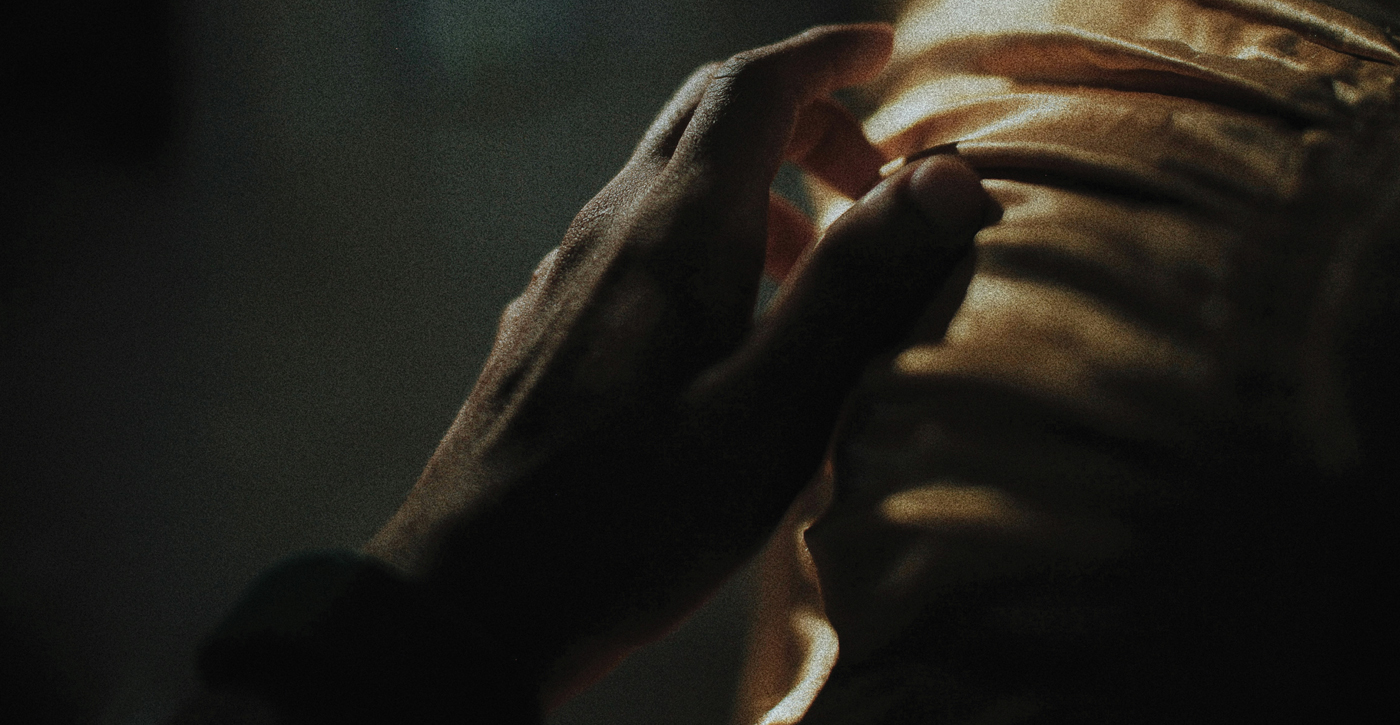
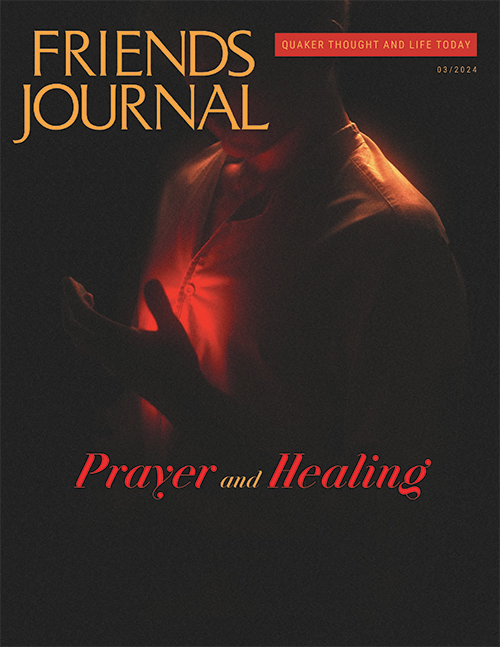
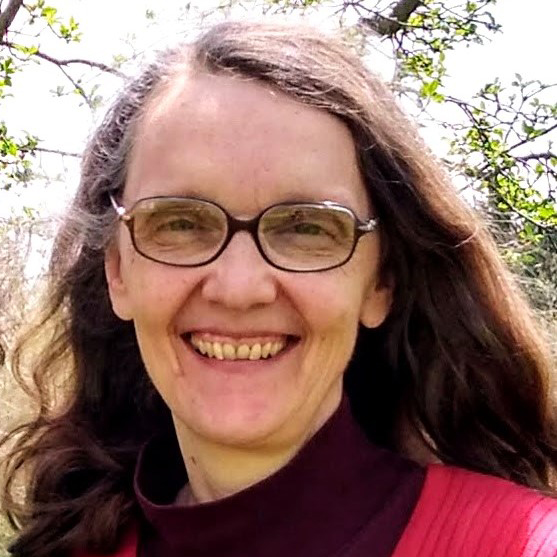
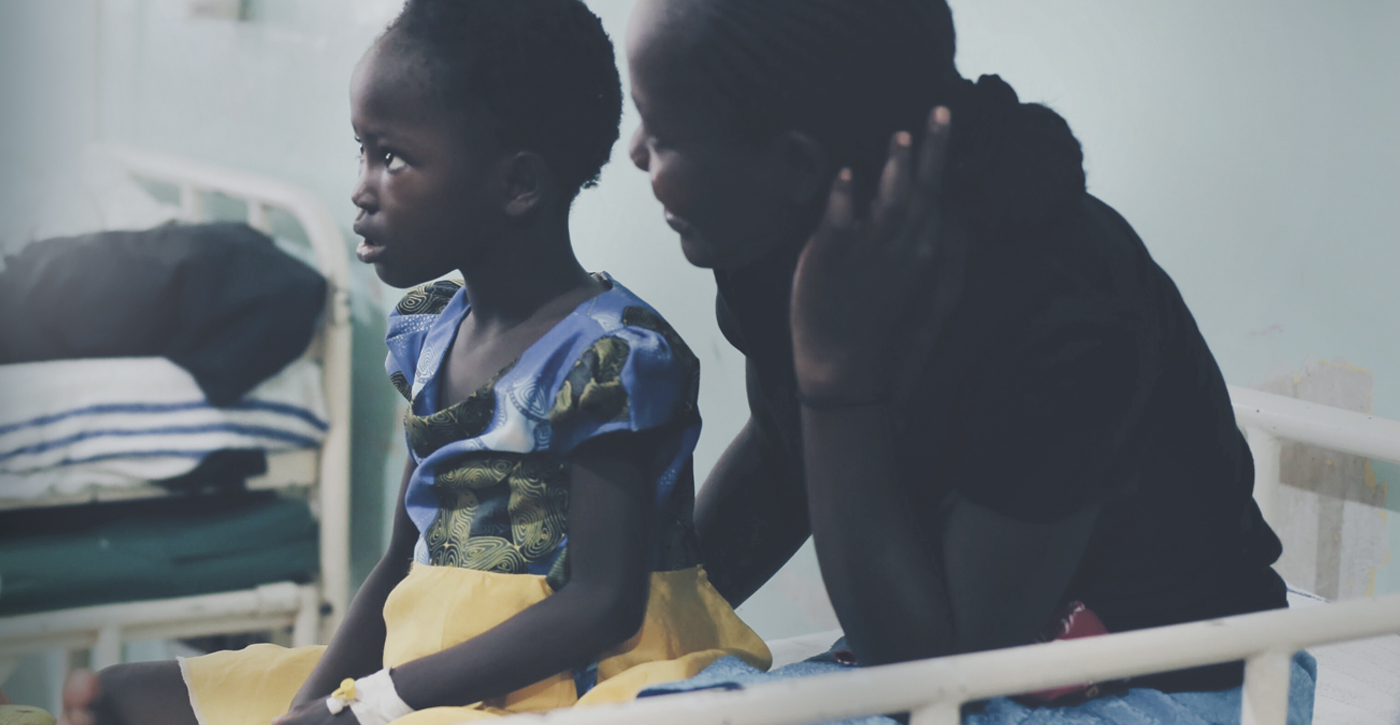
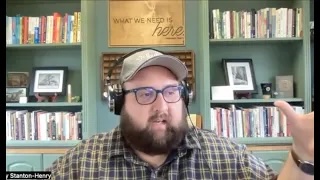
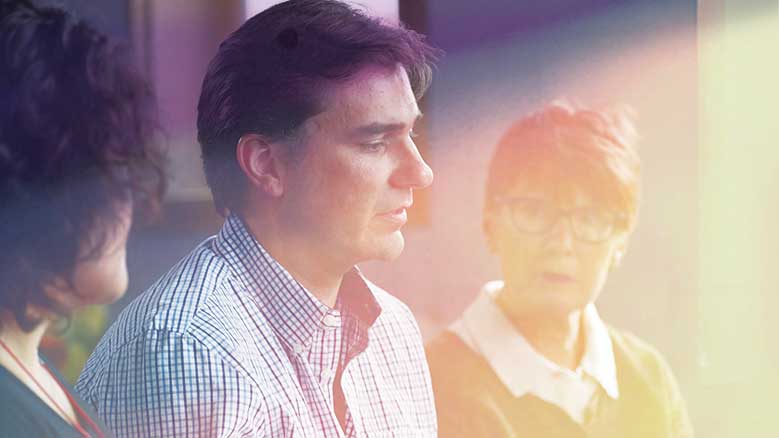
Thank thee Friend, this is a most encouraging article. I am excited about the movement of the healing spirit across our small green and blue planet at this time. I am equipping myself with the help of the Lord to play my part in it and I thank thee for your own faithfulness to that which you have been given to share and develop amongst the Religious Society of Friends and the wider world community. God please give Marcelle all the healing light she needs to continue her work for as long as possible, in your holy name so be it and so be the glory.
Dear Ruth, many thanks for your prayers! Blessings, Marcelle
Very appealing piece for today’s Quakerism.
It’s helpful to be made aware of founder Fox’s deep awareness of spiritual healing! Larry Dossey and Jeanne Acherberg are both responsible for reintroducing prayer to modern sensibilities.
I think the Quaker prayerful meditation can ignite the healing Spirit! Perhaps healing circles could help.